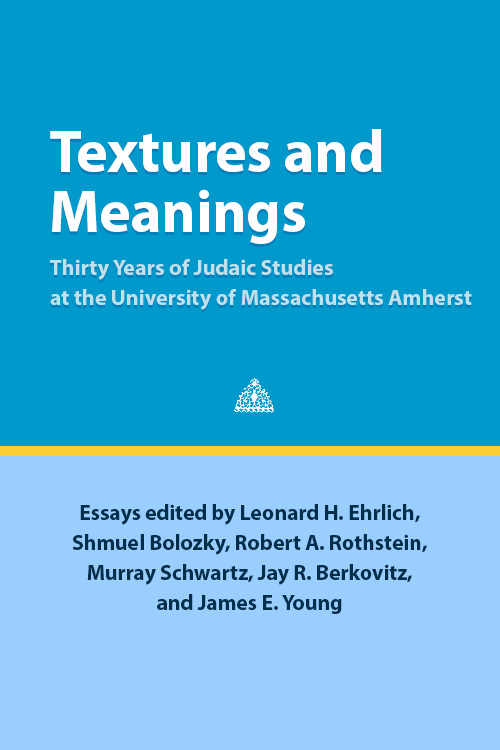The Uncanny Jew: A Brief History of an Image
Susan E. Shapiro
This chapter is part of: Leonard H. Ehrlich et al. 2004. Textures and Meanings: Thirty Years of Judaic Studies at the University of Massachusetts Amherst
Download Chapter| Description |
|---|
| Susan Shapiro turns our attention to the history of a stereotype, the eternal, wandering Jew, Ahasverus as “a living corpse,” an uncanny image. She begins by reminding us of a paradox, that the very success of Jewish assimilation fed the fantasy of perfidious, secret Jewish power. The representation of the Jew remains “unheimlich,” unhomey, having no resting place. Taken up by such figures as the Hegelian Karl Gutzkow, the Wandering Jew is understood in both in negative terms, as the doomed rejecter of Christ, or in a positive reading, as pointing toward a final conversion to Christianity. The figure of the Wandering Jew is also taken up by Zionist writers, such as Leo Pinsker and Moses Hess, for whom the establishment of a national home will end the submission to Judeophobia that relegates the Jew to ghostlike status within European cultures. Shapiro then goes on to outline the manifestations and transformations of the image of the uncanny Jew in the twentieth century. In Freud’s 1919 essay, “The Uncanny,” the image of the Jew is absent, and Shapiro argues that this absence indicates Freud’s transformation of the image into his theorization of the place of the maternal and the death instinct in the experience of the uncanny. Freud thus reads “the uncanniness of the Jew into the very structures of the unconscious within everyman.” Finally, in a condensed reading of French critical theory, Shapiro focuses on what Pinsker called the “inseparable companions,” Judaism and anti-Semitism, questioning the responsibility of Jewish thinkers who take up such volatile images as the “Jewish Uncanny.” |
-
Details
Published Published By Aug. 1, 2004 University of Massachusetts Amherst Libraries Citation Shapiro S. 2004. The Uncanny Jew: A Brief History of an Image. In Leonard H. Ehrlich et al. 2004. Textures and Meanings: Thirty Years of Judaic Studies at the University of Massachusetts Amherst
